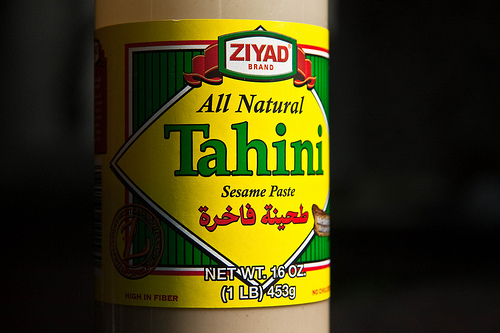
I'll be honest with you, even though I eat tahini pretty much every day, and I spent two years at a liberal arts college where they fed us tahini in every meal at the dorm cafeteria, I still had very little idea what it actually was until recently. In my mind it often got confused with tamari, which is a thicker, gluten-free kind of soy sauce.
Tahini is a staple of Greek and Middle Eastern food. It's the foundation of many Middle Eastern dishes, although it is rarely served on its own. I think this is part of why it is so mysterious to many Americans. You never just get a dish of tahini. If it helps clarify things, philosophically speaking, tahini is to Middle Eastern food as tomato sauce is to Italian food, clarified broth is to French food, and cheese is to American cuisine.
Tahini is a simple paste of ground sesame seeds and olive oil. You can buy pre-made tahini, or make it yourself by simply toasting sesame seeds and throwing them into the food processor along with some olive oil until it forms a paste with a consistency like creamy peanut butter. In this way it reminds me a little of pesto sauce: take a few simple ingredients, blend them up, and they become a single melded taste that is better than the sum of its parts.
The most common use of tahini in America is to blend it with garbanzo beans to make hummus, which I love to eat as a dip with carrot chips. The second biggest use for tahini is to bake it with eggplant to create baba ghanoush.
But in addition to these classics, there are a lot of other uses for tahini as well. Serious Eats recommends using it as a dip for raw crudites, spreading it on toast, blending it into salad dressing, and more.
Image courtesy Flickr/Another Pint Please...

1 comments